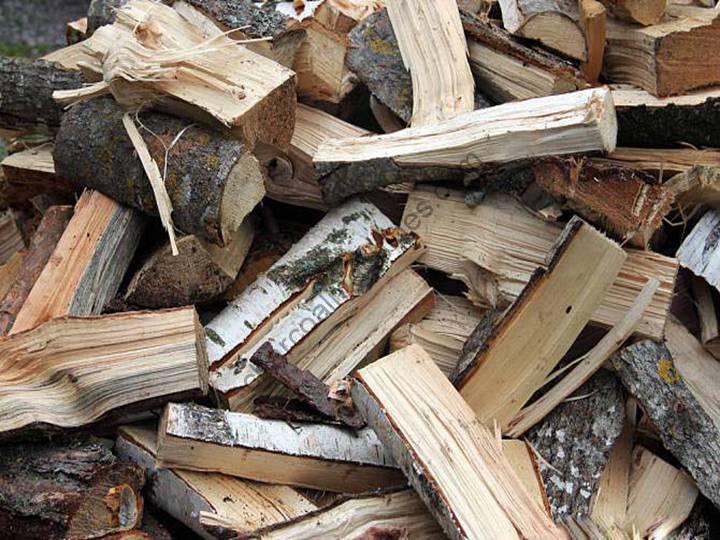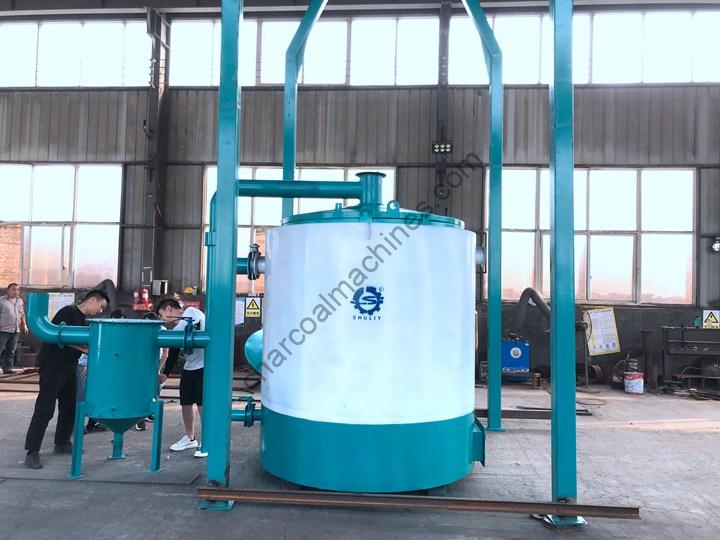Charcoal carbonization furnace’s production process
The main method of producing lump charcoal is generally to build the earth kiln for wood carbonizing or use the charcoal carbonization furnace to produce charcoal. At present, for the protection of the natural environment, the method of processing charcoal using the carbonization furnace is adopted by more and more charcoal factories.
So, how can charcoal processors use charcoal furnaces to produce charcoal? How is its production process? As a global charcoal equipment manufacturer and supplier for 10 years, Shuliy Factory has accumulated a lot of experience in improving charcoal processing equipment and production practices in charcoal processing.
Our professional engineers took the best-selling hoisting charcoal carbonizing furnace in our factory as an example and introduced in detail the use of the charcoal furnace and the performance of the carbonization process.

wood log sections for carbonizing 
finished wood lump charcoal
Steps for the operation of hoist-type charcoal carbonization furnace
- Fill the inner charcoal stove of the carbonization furnace with raw materials. Put the sawdust briquettes (the best length is about 40-50cm) or the log sections and the bamboo sections (generally the best length is 20-30cm) directly into the inner stove of the carbonization furnace (or place it in a special iron frame). The thickness of the raw materials placed in the inner stove of the carbonization furnace is generally 2-3 layers.
- Cover the inner charcoal stove of the carbonization furnace with a lid. Put the lid of the inner tank on the inner tank of the carbonization furnace. Then add river sand to the upper groove of the carbonized liner for sealing. The thickness of river sand should be above 3cm. Finally, install a thermometer on the hole of the thermometer on the upper cover of the carbonization liner.
- Put the carbonization liner into the furnace body of the carbonization furnace. The sealed carbonization stove is hoisted into the center of the charcoal carbonization furnace by a row hoist. Note that the smoke pipe on the inner cover and the smoke pipe on the filter tank should be kept in a straight line, so as to be sealed with a pipe joint.
- The valve of the carbonization furnace is used. Before starting the carbonization, close all the valves of the carbonization furnace and open the drain holes of the carbonization furnace.
- Ignite at the bottom of the carbonization furnace. The carbonization process of the hoisting carbonization furnace generally requires alternate carbonization. Generally, two carbonization furnaces must be ignited first. First, open the moisture removal cover in the middle of the upper and middle carbonization inner furnace cover, and use firewood or gas to heat the bottom of the inner furnace. It can be burned with a high fire for 10 minutes to make the temperature in the carbonization furnace reach about 90°C. Then switch to a slow fire (small fire) for burning.
- Charcoal furnace carbonization process. In the carbonization stage, a slow fire is generally used for combustion. Normally, combustion does not require a large fire, but it is necessary to ensure that the temperature of the carbonization furnace continues to rise. Under normal circumstances, it is necessary to ensure that the temperature of the carbonization furnace is maintained at 90℃-150℃ for more than 7.5 hours, and 150℃-280℃ for more than 2 hours. When the temperature of the carbonization furnace rises to about 235°C (it is sufficient to reach the combustion-supporting conditions of the carbonization furnace), open all the valves of the carbonization furnace, cover and seal the moisture exhaust holes, start the induced draft fan, open the circulating water pump, and make the carbonization furnace produce The combustible gas is returned to the bottom of the furnace for cyclic combustion.
- Carbonization is over. When the temperature of the current two furnaces burned from 450°C to 600°C (2 hours) has dropped, it indicates that the carbonization is about to end. The general characteristics of the flue gas produced during carbonization are: smokeless → small flue gas → large flue gas → maximum flue gas → small flue gas. When the flue gas becomes significantly smaller, it indicates that the carbonization is complete. At this time, stop firing the inner furnace and close the upper and lower valves of the first two furnaces.
- Take the inner carbonization furnace out of the furnace body of the carbonization furnace. Remove the connecting pipes between the first two filter tanks and the inner tank, and lift out the inner furnace with hoisting equipment. Then seal all the exhaust ports of the inner furnace cover, and place the inner furnace in a ventilated place to cool down. Then hoist the other inner carbonization furnace with raw materials into the furnace body of the carbonization furnace for re-ignition and carbonization (the operation method is the same as above).
- Take out the charcoal from the inner carbonization furnace. The finished charcoal can only be taken out when the temperature of the inner tank containing the charcoal drops below 50°C.

hoist charcoal carboniztion furnace supplier 
charcoal plant in Indonesia with charcoal furnaces

2 comments